We Use Cookies
This website uses cookies to ensure you get the best experience on our website.
Garner valuable insights from images, videos, sensors and geospatial data to discover endless possibilities using Artificial Intelligence and Machine Learning.
Meticulously label/annotate different types and size of images with precise capturing tools to make it recognizable for machines.
Annotate 2D and 3D patterns in running images and account for all moving objects in a video frame to train a wide range of ML models.
Bring together inputs from multiple sensors and disparate sources such as Radars, LiDARs, and Cameras to develop a single model of the surroundings of an object/vehicle.
Power autonomous vehicles, drones, and other computer vision applications to enable accurate interpretation of images and video using high-quality datasets.
Garner valuable insights from images, videos, sensors and geospatial data to discover endless possibilities using Artificial Intelligence and Machine Learning.
NextWealth’s NLP capabilities in audio and text can help enterprises in query/content understanding as well as improve both user experience and insight discovery.
Make texts comprehensible to machines by identifying important keywords, classifying, and tagging texts within the predetermined set of categories to enable virtual assistants/chatbots etc to easily understand the texts multiple dialects and languages.
ML models require annotated audio to make sound more comprehensible for chatbots or virtual assistant devices. By providing audio annotation service to recorded sounds or speech, NextWealth adds metadata to make the human – machine interaction more meaningful.
NextWealth’s NLP capabilities in audio and text can help enterprises in query/content understanding as well as improve both user experience and insight discovery.
AI has helped the eCommerce industry maintain its dynamic operations to ensure a seamless customer experience. Craft smart and digitally focussed customer experiences that demand quality and are strategically lean towards transformational growth.
Identify and replace incomplete, inaccurate, irrelevant, and complex data and records.
AI has helped the eCommerce industry maintain its dynamic operations to ensure a seamless customer experience. Craft smart and digitally focussed customer experiences that demand quality and are strategically lean towards transformational growth.
BPO Outsourcing offers businesses the flexibility to scale their operations up or down, accelerate growth and improve the bottom line while keeping customers satisfied.
Digital CX involves handling the interactions of customers with businesses across their physical and digital touchpoints delivering customer experience that retains the customer’s loyalty and trust in the brand.
Back-office services refer to those non-core activities ranging from document verification and data entry to financial and accounting processes, medical coding and billing to identity verification services to achieve greater accuracy, agility, and responsiveness.
BPO Outsourcing offers businesses the flexibility to scale their operations up or down, accelerate growth and improve the bottom line while keeping customers satisfied.
BPO Outsourcing offers businesses the flexibility to scale their operations up or down, accelerate growth and improve the bottom line while keeping customers satisfied.
BPO Outsourcing offers businesses the flexibility to scale their operations up or down, accelerate growth and improve the bottom line while keeping customers satisfied.
NextWealth is a social impact organization providing world-class AI/ML data services, digital customer experience and IT/BPM services to customers globally.
NextWealth was founded by Wipro veterans – Dr. Sridhar Mitta, Mr. Anand Talwai and Ms. Mythily Ramesh with the purpose of providing jobs to graduates in small towns, focussing on women.
NextWealth has eleven delivery centers – Mallasamudram, Chittoor, Hubballi, Bhilai, Mysore, Vellore, Puducherry, Salem, Jaipur, Udaipur and Kumbakonam employing more than 4,500 small town graduates
NextWealth, with its unique distributed delivery model, has succeeded in bringing hi-tech employment to small towns, making a difference in peoples’ life, thus creating a social impact.
At NextWealth, we live and breathe our values every single day. Our core values are integrity, excellence in work, respect for every individual, commitment to commitment and being socially responsible.
NextWealth is a social impact organization providing world-class AI/ML data services, digital customer experience and IT/BPM services to customers globally.
There is something for everyone here at NextWealth, whether you are a data scientist, operations head, CFO, research person, machine learning enthusiast or students looking for information.
Check out our latest videos on our purpose, domain capabilities, use-cases, customer testimonials, social impact stories and many more.
Learn how NextWealth has been a thinking partner to its clients across AI/ML, eCommerce, BFSI, Healthcare and other industries.
NextWealth’s team of domain experts share their knowledge on trending topics such as Active Learning, Natural Language Processing, Employee Inner Wellbeing, etc helping us be up to date.
Check out NextWealth’s latest news, awards, accolades and achievements here.
There is something for everyone here at NextWealth, whether you are a data scientist, operations head, CFO, research person, machine learning enthusiast or students looking for information.
The NextWealth Partner Ecosystem helps create unique winning partnerships that offer mutual business growth opportunities and joint value, driven by collaboration, executive commitment and thought leadership.
NextWealth values all its partners who help us integrate systems, maintain ecosystem, resellers and annotation partners.
NextWealth has culture codes in place which help both partners and the inhouse team to work in a conducive environment to achieve goals as a team.
NextWealth has all the possible questions right here to clear all your doubts to build a trust even before we start the engagement.
The NextWealth Partner Ecosystem helps create unique winning partnerships that offer mutual business growth opportunities and joint value, driven by collaboration, executive commitment and thought leadership.
Garner valuable insights from images, videos, sensors and geospatial data to discover endless possibilities using Artificial Intelligence and Machine Learning.
Meticulously label/annotate different types and size of images with precise capturing tools to make it recognizable for machines.
Annotate 2D and 3D patterns in running images and account for all moving objects in a video frame to train a wide range of ML models.
Bring together inputs from multiple sensors and disparate sources such as Radars, LiDARs, and Cameras to develop a single model of the surroundings of an object/vehicle.
Power autonomous vehicles, drones, and other computer vision applications to enable accurate interpretation of images and video using high-quality datasets.
Garner valuable insights from images, videos, sensors and geospatial data to discover endless possibilities using Artificial Intelligence and Machine Learning.
NextWealth’s NLP capabilities in audio and text can help enterprises in query/content understanding as well as improve both user experience and insight discovery.
Make texts comprehensible to machines by identifying important keywords, classifying, and tagging texts within the predetermined set of categories to enable virtual assistants/chatbots etc to easily understand the texts multiple dialects and languages.
ML models require annotated audio to make sound more comprehensible for chatbots or virtual assistant devices. By providing audio annotation service to recorded sounds or speech, NextWealth adds metadata to make the human – machine interaction more meaningful.
NextWealth’s NLP capabilities in audio and text can help enterprises in query/content understanding as well as improve both user experience and insight discovery.
AI has helped the eCommerce industry maintain its dynamic operations to ensure a seamless customer experience. Craft smart and digitally focussed customer experiences that demand quality and are strategically lean towards transformational growth.
Identify and replace incomplete, inaccurate, irrelevant, and complex data and records.
AI has helped the eCommerce industry maintain its dynamic operations to ensure a seamless customer experience. Craft smart and digitally focussed customer experiences that demand quality and are strategically lean towards transformational growth.
BPO Outsourcing offers businesses the flexibility to scale their operations up or down, accelerate growth and improve the bottom line while keeping customers satisfied.
Digital CX involves handling the interactions of customers with businesses across their physical and digital touchpoints delivering customer experience that retains the customer’s loyalty and trust in the brand.
Back-office services refer to those non-core activities ranging from document verification and data entry to financial and accounting processes, medical coding and billing to identity verification services to achieve greater accuracy, agility, and responsiveness.
BPO Outsourcing offers businesses the flexibility to scale their operations up or down, accelerate growth and improve the bottom line while keeping customers satisfied.
BPO Outsourcing offers businesses the flexibility to scale their operations up or down, accelerate growth and improve the bottom line while keeping customers satisfied.
BPO Outsourcing offers businesses the flexibility to scale their operations up or down, accelerate growth and improve the bottom line while keeping customers satisfied.
NextWealth is a social impact organization providing world-class AI/ML data services, digital customer experience and IT/BPM services to customers globally.
NextWealth was founded by Wipro veterans – Dr. Sridhar Mitta, Mr. Anand Talwai and Ms. Mythily Ramesh with the purpose of providing jobs to graduates in small towns, focussing on women.
NextWealth has eleven delivery centers – Mallasamudram, Chittoor, Hubballi, Bhilai, Mysore, Vellore, Puducherry, Salem, Jaipur, Udaipur and Kumbakonam employing more than 4,500 small town graduates
NextWealth, with its unique distributed delivery model, has succeeded in bringing hi-tech employment to small towns, making a difference in peoples’ life, thus creating a social impact.
At NextWealth, we live and breathe our values every single day. Our core values are integrity, excellence in work, respect for every individual, commitment to commitment and being socially responsible.
NextWealth is a social impact organization providing world-class AI/ML data services, digital customer experience and IT/BPM services to customers globally.
There is something for everyone here at NextWealth, whether you are a data scientist, operations head, CFO, research person, machine learning enthusiast or students looking for information.
Check out our latest videos on our purpose, domain capabilities, use-cases, customer testimonials, social impact stories and many more.
Learn how NextWealth has been a thinking partner to its clients across AI/ML, eCommerce, BFSI, Healthcare and other industries.
NextWealth’s team of domain experts share their knowledge on trending topics such as Active Learning, Natural Language Processing, Employee Inner Wellbeing, etc helping us be up to date.
Check out NextWealth’s latest news, awards, accolades and achievements here.
There is something for everyone here at NextWealth, whether you are a data scientist, operations head, CFO, research person, machine learning enthusiast or students looking for information.
The NextWealth Partner Ecosystem helps create unique winning partnerships that offer mutual business growth opportunities and joint value, driven by collaboration, executive commitment and thought leadership.
NextWealth values all its partners who help us integrate systems, maintain ecosystem, resellers and annotation partners.
NextWealth has culture codes in place which help both partners and the inhouse team to work in a conducive environment to achieve goals as a team.
NextWealth has all the possible questions right here to clear all your doubts to build a trust even before we start the engagement.
The NextWealth Partner Ecosystem helps create unique winning partnerships that offer mutual business growth opportunities and joint value, driven by collaboration, executive commitment and thought leadership.
Garner valuable insights from images, videos, sensors and geospatial data to discover endless possibilities using Artificial Intelligence and Machine Learning.
Meticulously label/annotate different types and size of images with precise capturing tools to make it recognizable for machines.
Annotate 2D and 3D patterns in running images and account for all moving objects in a video frame to train a wide range of ML models.
Bring together inputs from multiple sensors and disparate sources such as Radars, LiDARs, and Cameras to develop a single model of the surroundings of an object/vehicle.
Power autonomous vehicles, drones, and other computer vision applications to enable accurate interpretation of images and video using high-quality datasets.
Garner valuable insights from images, videos, sensors and geospatial data to discover endless possibilities using Artificial Intelligence and Machine Learning.
NextWealth’s NLP capabilities in audio and text can help enterprises in query/content understanding as well as improve both user experience and insight discovery.
Make texts comprehensible to machines by identifying important keywords, classifying, and tagging texts within the predetermined set of categories to enable virtual assistants/chatbots etc to easily understand the texts multiple dialects and languages.
ML models require annotated audio to make sound more comprehensible for chatbots or virtual assistant devices. By providing audio annotation service to recorded sounds or speech, NextWealth adds metadata to make the human – machine interaction more meaningful.
NextWealth’s NLP capabilities in audio and text can help enterprises in query/content understanding as well as improve both user experience and insight discovery.
AI has helped the eCommerce industry maintain its dynamic operations to ensure a seamless customer experience. Craft smart and digitally focussed customer experiences that demand quality and are strategically lean towards transformational growth.
Identify and replace incomplete, inaccurate, irrelevant, and complex data and records.
AI has helped the eCommerce industry maintain its dynamic operations to ensure a seamless customer experience. Craft smart and digitally focussed customer experiences that demand quality and are strategically lean towards transformational growth.
BPO Outsourcing offers businesses the flexibility to scale their operations up or down, accelerate growth and improve the bottom line while keeping customers satisfied.
Digital CX involves handling the interactions of customers with businesses across their physical and digital touchpoints delivering customer experience that retains the customer’s loyalty and trust in the brand.
Back-office services refer to those non-core activities ranging from document verification and data entry to financial and accounting processes, medical coding and billing to identity verification services to achieve greater accuracy, agility, and responsiveness.
BPO Outsourcing offers businesses the flexibility to scale their operations up or down, accelerate growth and improve the bottom line while keeping customers satisfied.
BPO Outsourcing offers businesses the flexibility to scale their operations up or down, accelerate growth and improve the bottom line while keeping customers satisfied.
BPO Outsourcing offers businesses the flexibility to scale their operations up or down, accelerate growth and improve the bottom line while keeping customers satisfied.
NextWealth is a social impact organization providing world-class AI/ML data services, digital customer experience and IT/BPM services to customers globally.
NextWealth was founded by Wipro veterans – Dr. Sridhar Mitta, Mr. Anand Talwai and Ms. Mythily Ramesh with the purpose of providing jobs to graduates in small towns, focussing on women.
NextWealth has eleven delivery centers – Mallasamudram, Chittoor, Hubballi, Bhilai, Mysore, Vellore, Puducherry, Salem, Jaipur, Udaipur and Kumbakonam employing more than 4,500 small town graduates
NextWealth, with its unique distributed delivery model, has succeeded in bringing hi-tech employment to small towns, making a difference in peoples’ life, thus creating a social impact.
At NextWealth, we live and breathe our values every single day. Our core values are integrity, excellence in work, respect for every individual, commitment to commitment and being socially responsible.
NextWealth is a social impact organization providing world-class AI/ML data services, digital customer experience and IT/BPM services to customers globally.
There is something for everyone here at NextWealth, whether you are a data scientist, operations head, CFO, research person, machine learning enthusiast or students looking for information.
Check out our latest videos on our purpose, domain capabilities, use-cases, customer testimonials, social impact stories and many more.
Learn how NextWealth has been a thinking partner to its clients across AI/ML, eCommerce, BFSI, Healthcare and other industries.
NextWealth’s team of domain experts share their knowledge on trending topics such as Active Learning, Natural Language Processing, Employee Inner Wellbeing, etc helping us be up to date.
Check out NextWealth’s latest news, awards, accolades and achievements here.
There is something for everyone here at NextWealth, whether you are a data scientist, operations head, CFO, research person, machine learning enthusiast or students looking for information.
The NextWealth Partner Ecosystem helps create unique winning partnerships that offer mutual business growth opportunities and joint value, driven by collaboration, executive commitment and thought leadership.
NextWealth values all its partners who help us integrate systems, maintain ecosystem, resellers and annotation partners.
NextWealth has culture codes in place which help both partners and the inhouse team to work in a conducive environment to achieve goals as a team.
NextWealth has all the possible questions right here to clear all your doubts to build a trust even before we start the engagement.
The NextWealth Partner Ecosystem helps create unique winning partnerships that offer mutual business growth opportunities and joint value, driven by collaboration, executive commitment and thought leadership.
Garner valuable insights from images, videos, sensors and geospatial data to discover endless possibilities using Artificial Intelligence and Machine Learning.
Meticulously label/annotate different types and size of images with precise capturing tools to make it recognizable for machines.
Annotate 2D and 3D patterns in running images and account for all moving objects in a video frame to train a wide range of ML models.
Bring together inputs from multiple sensors and disparate sources such as Radars, LiDARs, and Cameras to develop a single model of the surroundings of an object/vehicle.
Power autonomous vehicles, drones, and other computer vision applications to enable accurate interpretation of images and video using high-quality datasets.
Garner valuable insights from images, videos, sensors and geospatial data to discover endless possibilities using Artificial Intelligence and Machine Learning.
NextWealth’s NLP capabilities in audio and text can help enterprises in query/content understanding as well as improve both user experience and insight discovery.
Make texts comprehensible to machines by identifying important keywords, classifying, and tagging texts within the predetermined set of categories to enable virtual assistants/chatbots etc to easily understand the texts multiple dialects and languages.
ML models require annotated audio to make sound more comprehensible for chatbots or virtual assistant devices. By providing audio annotation service to recorded sounds or speech, NextWealth adds metadata to make the human – machine interaction more meaningful.
NextWealth’s NLP capabilities in audio and text can help enterprises in query/content understanding as well as improve both user experience and insight discovery.
AI has helped the eCommerce industry maintain its dynamic operations to ensure a seamless customer experience. Craft smart and digitally focussed customer experiences that demand quality and are strategically lean towards transformational growth.
Identify and replace incomplete, inaccurate, irrelevant, and complex data and records.
AI has helped the eCommerce industry maintain its dynamic operations to ensure a seamless customer experience. Craft smart and digitally focussed customer experiences that demand quality and are strategically lean towards transformational growth.
BPO Outsourcing offers businesses the flexibility to scale their operations up or down, accelerate growth and improve the bottom line while keeping customers satisfied.
Digital CX involves handling the interactions of customers with businesses across their physical and digital touchpoints delivering customer experience that retains the customer’s loyalty and trust in the brand.
Back-office services refer to those non-core activities ranging from document verification and data entry to financial and accounting processes, medical coding and billing to identity verification services to achieve greater accuracy, agility, and responsiveness.
BPO Outsourcing offers businesses the flexibility to scale their operations up or down, accelerate growth and improve the bottom line while keeping customers satisfied.
BPO Outsourcing offers businesses the flexibility to scale their operations up or down, accelerate growth and improve the bottom line while keeping customers satisfied.
BPO Outsourcing offers businesses the flexibility to scale their operations up or down, accelerate growth and improve the bottom line while keeping customers satisfied.
NextWealth is a social impact organization providing world-class AI/ML data services, digital customer experience and IT/BPM services to customers globally.
NextWealth was founded by Wipro veterans – Dr. Sridhar Mitta, Mr. Anand Talwai and Ms. Mythily Ramesh with the purpose of providing jobs to graduates in small towns, focussing on women.
NextWealth has eleven delivery centers – Mallasamudram, Chittoor, Hubballi, Bhilai, Mysore, Vellore, Puducherry, Salem, Jaipur, Udaipur and Kumbakonam employing more than 4,500 small town graduates
NextWealth, with its unique distributed delivery model, has succeeded in bringing hi-tech employment to small towns, making a difference in peoples’ life, thus creating a social impact.
At NextWealth, we live and breathe our values every single day. Our core values are integrity, excellence in work, respect for every individual, commitment to commitment and being socially responsible.
NextWealth is a social impact organization providing world-class AI/ML data services, digital customer experience and IT/BPM services to customers globally.
There is something for everyone here at NextWealth, whether you are a data scientist, operations head, CFO, research person, machine learning enthusiast or students looking for information.
Check out our latest videos on our purpose, domain capabilities, use-cases, customer testimonials, social impact stories and many more.
Learn how NextWealth has been a thinking partner to its clients across AI/ML, eCommerce, BFSI, Healthcare and other industries.
NextWealth’s team of domain experts share their knowledge on trending topics such as Active Learning, Natural Language Processing, Employee Inner Wellbeing, etc helping us be up to date.
Check out NextWealth’s latest news, awards, accolades and achievements here.
There is something for everyone here at NextWealth, whether you are a data scientist, operations head, CFO, research person, machine learning enthusiast or students looking for information.
The NextWealth Partner Ecosystem helps create unique winning partnerships that offer mutual business growth opportunities and joint value, driven by collaboration, executive commitment and thought leadership.
NextWealth values all its partners who help us integrate systems, maintain ecosystem, resellers and annotation partners.
NextWealth has culture codes in place which help both partners and the inhouse team to work in a conducive environment to achieve goals as a team.
NextWealth has all the possible questions right here to clear all your doubts to build a trust even before we start the engagement.
The NextWealth Partner Ecosystem helps create unique winning partnerships that offer mutual business growth opportunities and joint value, driven by collaboration, executive commitment and thought leadership.
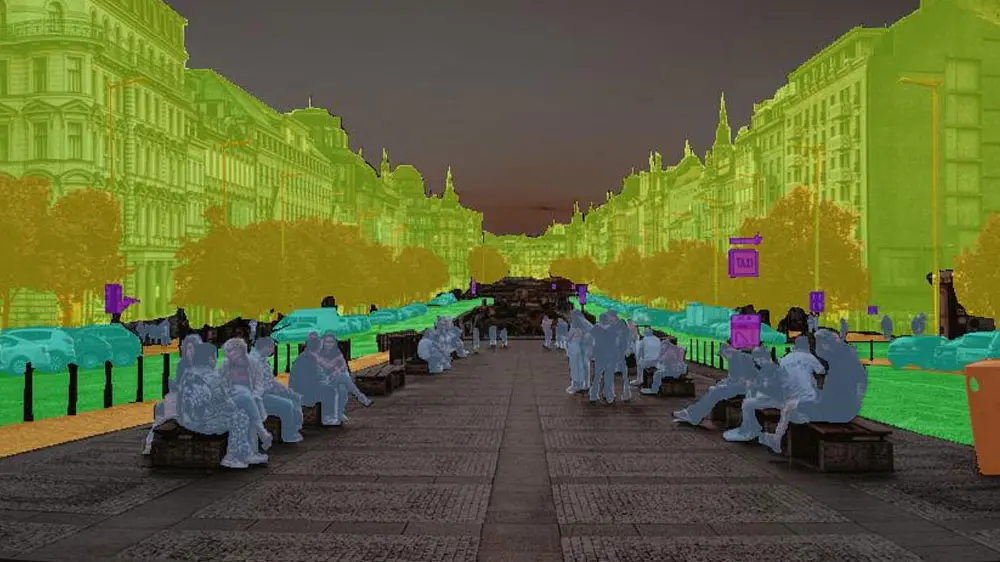
Semantic segmentation makes multiple elements in an image detectable by segmenting it to a specific class and localizing the object. A classification like this occurs when an image is categorized into two or more categories. Since such segmentation is done at the pixel level it gives better predictions and is used in advanced picture processing.
NextWealth provides semantic segmentation services to suit the needs of any computer vision model.
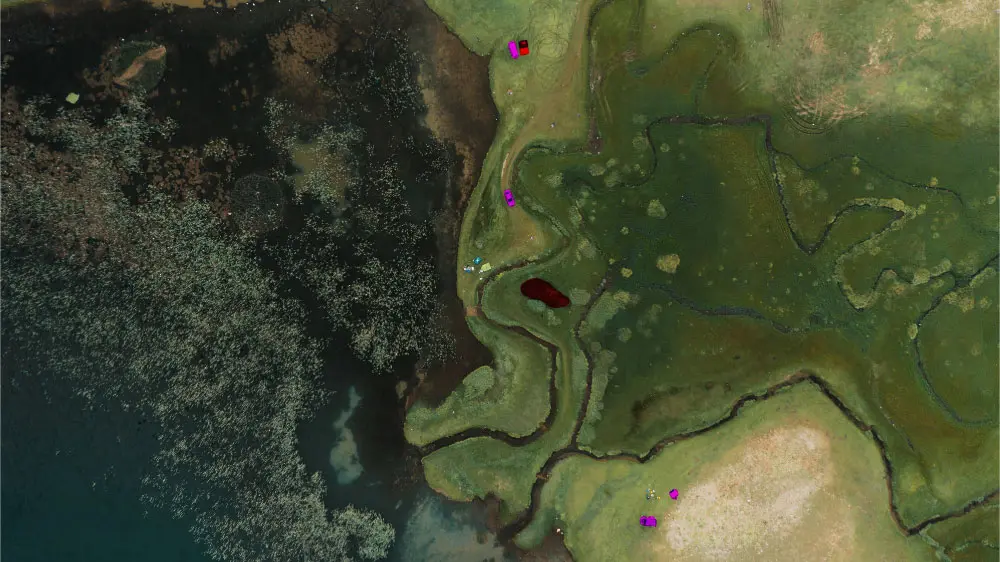
This method uses free-form regions to separate the elements within an image. The selected region is converted into predictions at the pixel level to ensure that it is visible to the computer vision models.
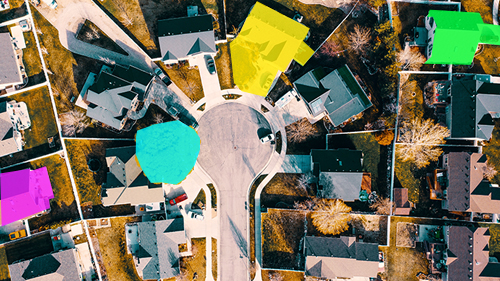
This type of segmentation is used to extract meaningful information from the image. It is mainly used to perform tasks such as identification, recognition, and classification of objects and image processing.
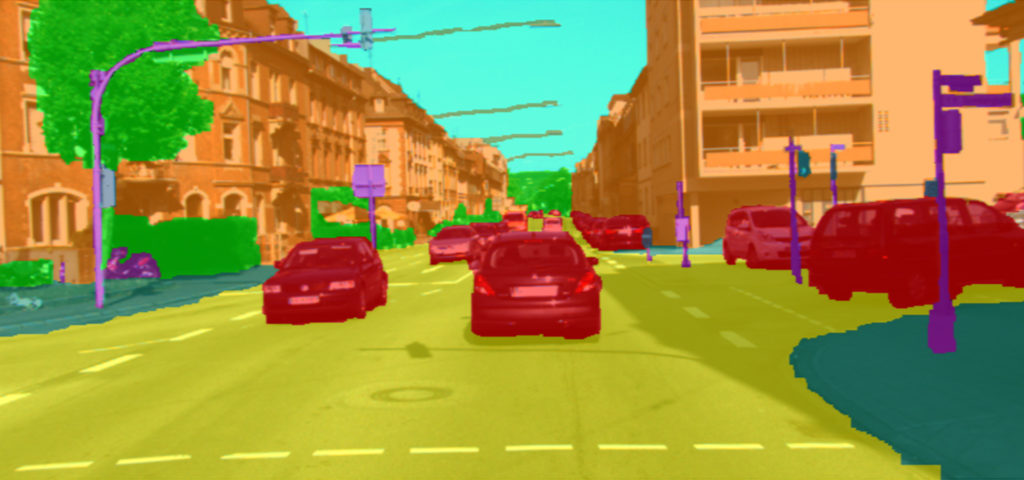
This type of segmentation is most commonly used to create pixel-wise segments from an image. The bounding boxes are used to train the models and customize various aspects as per the project needs.

Semantic segmentation is utilized to distinguish the differences between various types of clothing items by AI models in the fashion industry. Such understanding of clothing by the models allows the creation of virtual wardrobes for customers who can try these clothes virtually on their screens.
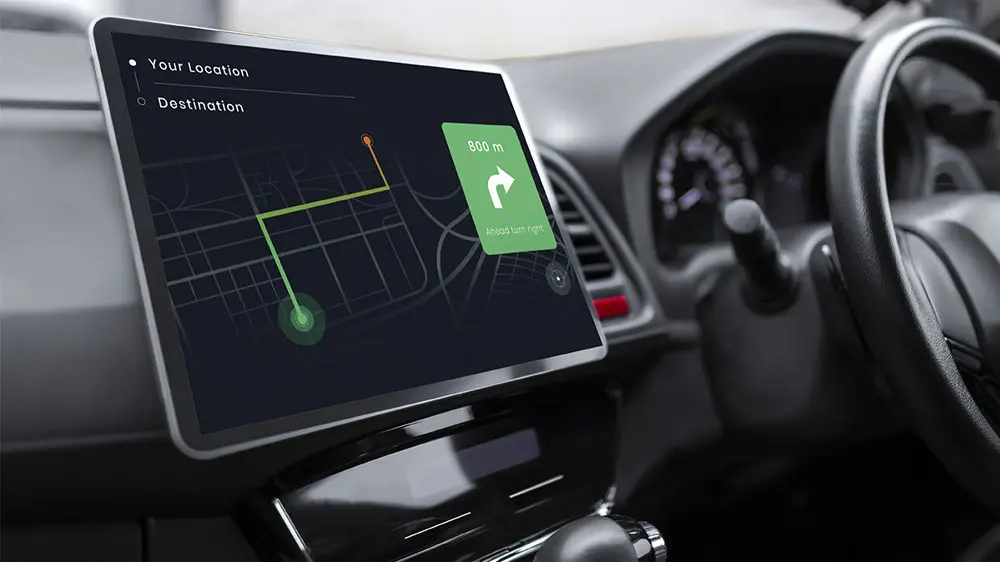
Semantic segmentation helps in making the models understand the complex road environments and recognize different objects present. Such segmentation of the information not only divides pedestrians from roads but also ensures safety for everyone present on the road.
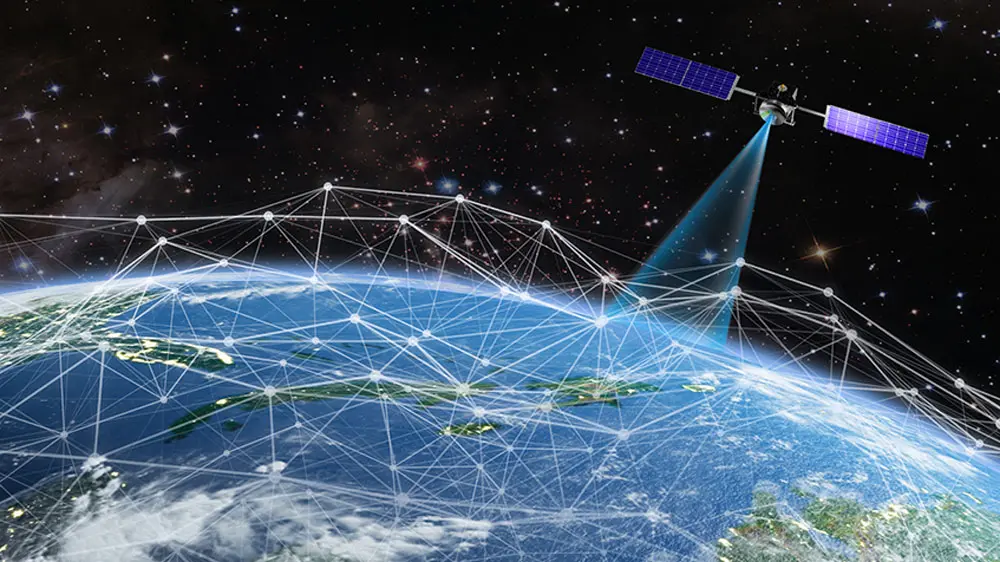
Semantic segmentation can train drones for geo-sensing of the fields and farms. Such precise segmentation is useful to enhance crop productivity and farming efficiency.
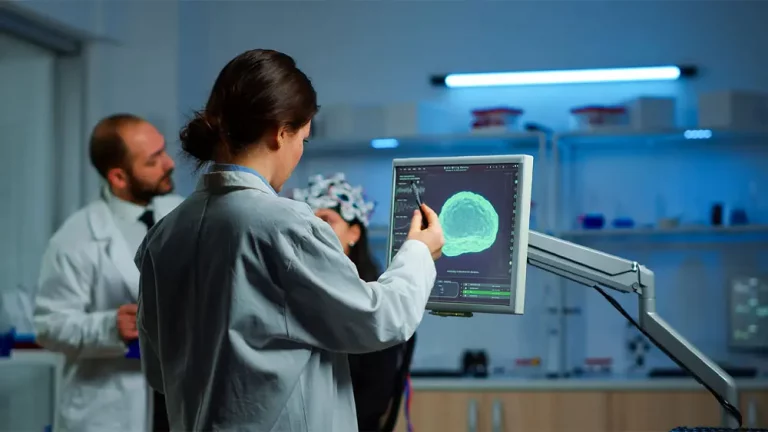
Segmentation of images in deep learning also provides accurate information in medical diagnosis through images. Such classification makes the diagnosis simple and generates faster results.

The image segmentation method separates the face regions like eyes, nose, mouth, chin, and hair to make the computer vision model understand them. Such classification along with other factors like image resolution, feature occultation, etc. are used in gender prediction, facial expression, age recognition, and more.

Instance segmentation of images results in recognizing the individual waste type by the ML models. This results in quicker isolation and identification of the waste particles and eliminates the harm caused due to human handling of such dangerous materials.
Both 2D and 3D semantic segmentation train the computer vision models to replicate the human ability to comprehend visuals and generate meaningful results.
However, there is a difference in the way each of them works and thereby their use cases. The 2D segmentation makes use of network architecture to achieve results and is hence used in satellite images. Whereas in 3D segmentation the objects are grouped in different categories and are hence are used in ADAS and 3D Maps.
As both 2D and 3D semantic segmentation enable machines to perform complex tasks they are utilized to obtain more granular level data resulting in better results.
To interpret the 3D world, any robot needs to understand its own position and the information for the surrounding 3D environment.
SLAM (Vision based simultaneous localization and mapping) is used to estimate the location of the robot. However, SLAM only reveals the structural data and hence the result is limited to a point. Scene parsing on the other hand reveals the pixel information in an image and categorizes them providing only semantic information.
But in certain use cases such as autonomous driving, it is important for the models to understand both semantic and structural information of the surroundings. Hence the 3D scene is presented in the form of boxes. Hence a joint 3D reconstruction and semantic segmentation of every frame within the image can result in a more realistic understanding.